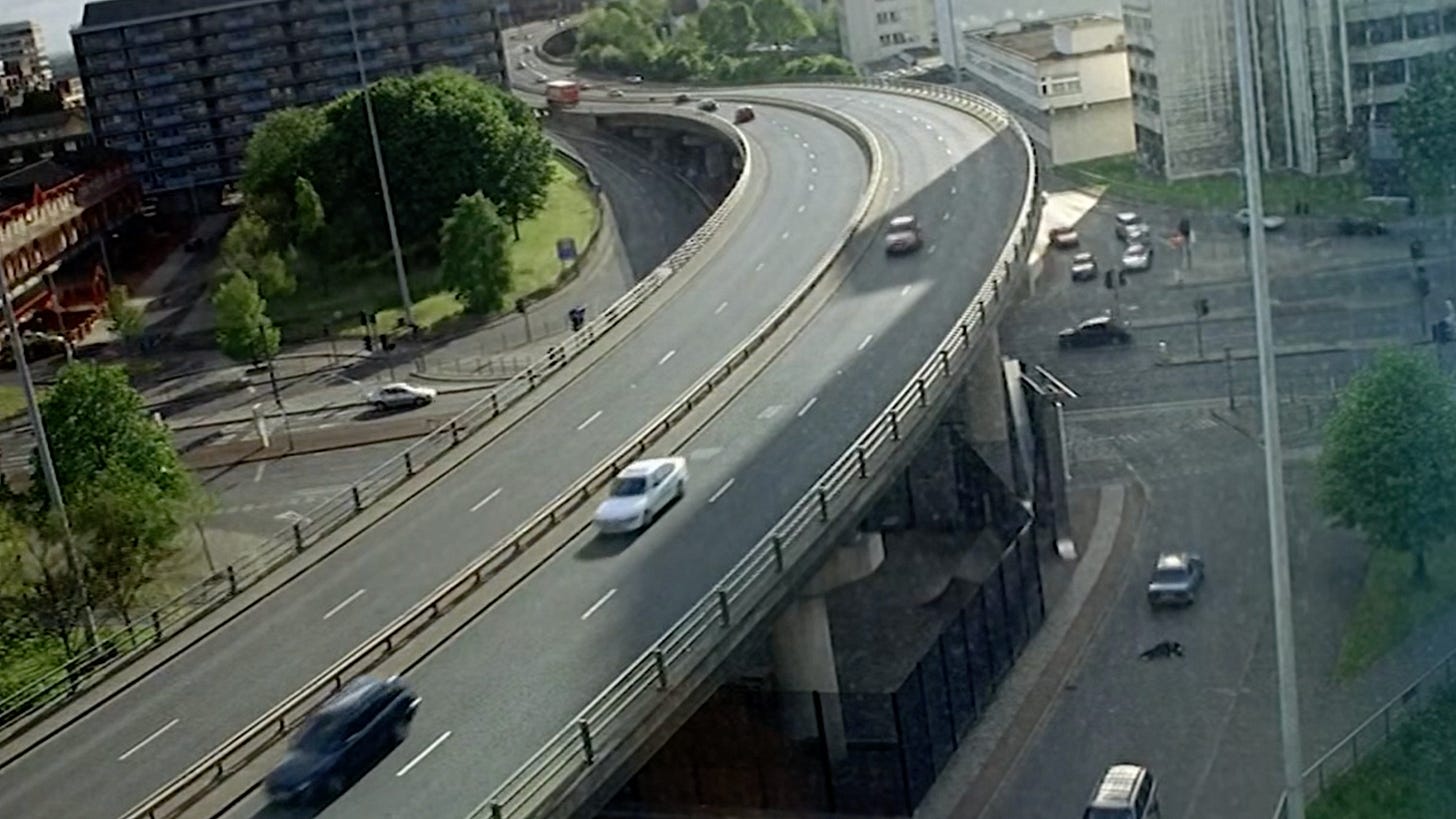Stunt Breakdown: LIFE ON MARS
The crucial plot point which changes the trajectory of the Life on Mars pilot is Sam Tyler (John Simm) getting hit by a car.
And how!
We’ll look at how the scene uses repeating shots, careful staging around both stuntwork and CGI, and contrast in angles and pacing, to sell the whole inciting incident.
Careful Staging and Framing
Staging for CGI
Sam stands up, and whoom! CGI spirits him away as a car goes past. This being 2006 and a TV budget, the CGI is . . . well.

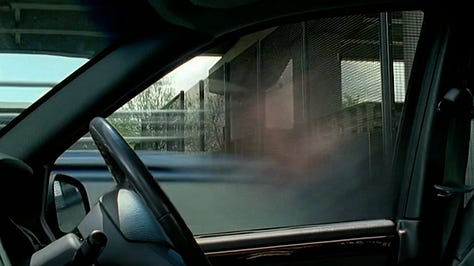
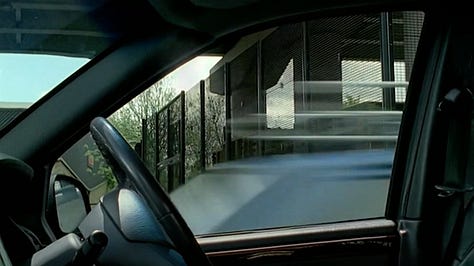
Most of the impact would happen under the level of the window, so it’s mostly seeing Sam get whisked out of frame, and sound effects leaving the rest to our imagination.
Said whisking is accomplished through CGI and then speeding it all up. Whether they realised they couldn’t make it more realistic once in post, or always intended the ‘impact shot’ to be only a few frames, when the impact doesn’t look believable, speeding up the impact and/or how quickly you cut away and get into saleable and/or practical stunts is critical.
Staging for Practical Stunts
The whole sequence involves only one low-key stunt and one bit of physicality — a guy rolling off a moving car, then a guy rolling over a few times while the car sits stationary.
First we see a new-to-the-scene shot angle, where the novelty gives us something to take in and process along with the guy falling off a car.
Then we return to a shot from pre-accident, where Sam continues his roll; if the super-wide were the only shot, it’s unimpressive. But paired with a quick unexpected ‘impact shot’ and this shot of a guy rolling off a moving car, it’s a great link between the impact and the personal turn things are about to take.
So let’s talk about those repeating shots!
Repeating Shots
More than just another use of a very cool shot, and nice way to avoid seeing the stunty isn’t actually John Simm, this works because it reminds us of the context in which he’s getting hit — big city, all alone, help nearby.
Before Sam gets hit, we see several shots of him leaning into the car window, a POV of his iPod, and as noted him in context of a modern freeway.
These shots will not be not-exactly-repeated but echoed in the first scene of Sam in the 70s.
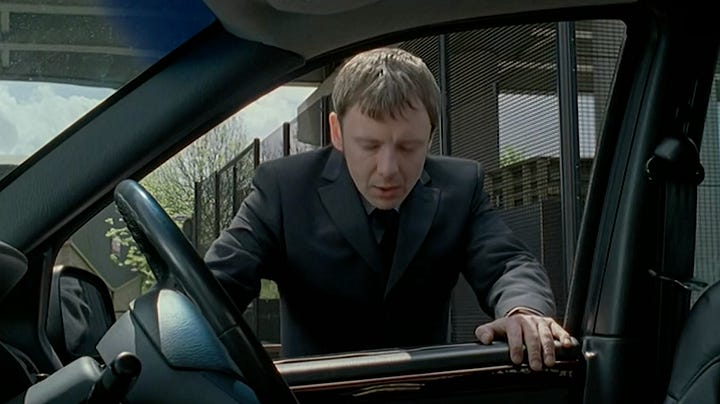
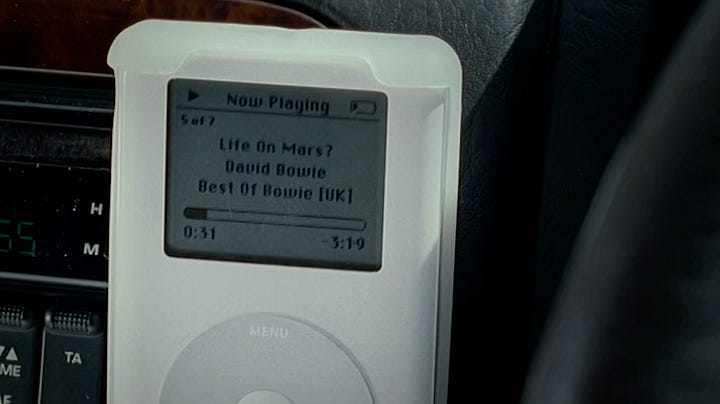
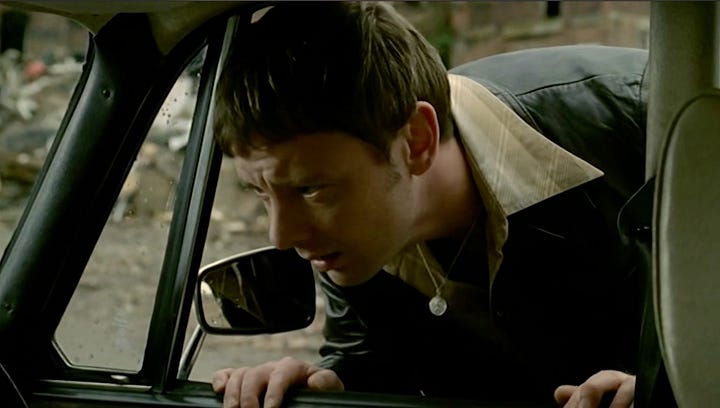

But back to the early 00s, for the moment.
After that high shot finishes the stunt then return to mediums and closeups featuring his face, just in a different orientation . . .
Contrast
Contrast in Angles
The scene took care to sit and watch Sam’s face in a few shots before he gets hit, then after he gets hit we return to shots studying his face, only now it’s lying on the pavement sideways shot [reminiscent of this Clockers shot also involving someone falling over].
Not much has changed: medium and closeup non-moving shots of Sam staring uncomprehending.
Everything has changed: Sam’s been hit by a car, and his world has gone sideways.
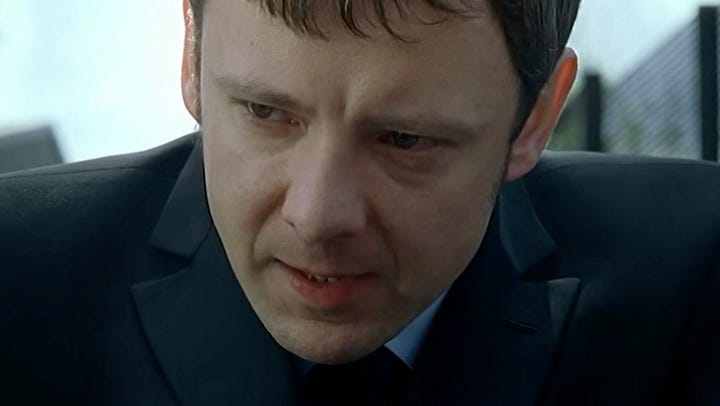

Same-same-but-markedly-different shots are a great way to demarcate not only the immediate before and after an event like being hit by a car, but how that event is going to shake up the narrative / Sam’s life.
Contrast in Rhythm
There’s no formulaic rhythm to the scene, but that’s a good thing; too much proscription in editing is boring!
Nor is it so simple as ‘one long oner before hit with the car, then several quick cuts after. What the scene including the cuts does is prioritise keeping us within Sam’s experience.
Shots sit with Sam when he’s still and thinking, cut quickly and/or have rapid motion through the frame when he’s hit by the car, then come back to his face in stillness and again sit with it, before transitioning into . . . well, that’s for another time.
Takeaways
A sudden, slightly ridiculous smashed-by-car-out-of-nowhere is more forgiven in a lower budget TV show than, say, a 90million dollar star vehicle.
But careful staging around your practical stuntwork and CGI, repeating certain shots, and using contrast in your angles and cuts, can go a long way!
Stay tuned, because coming soon we look at how they use one stunning shot to transition Sam from this scene into the 1970s . . .




